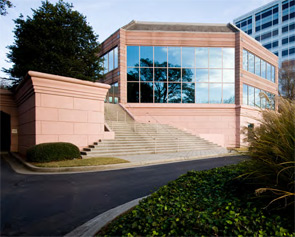
For several years, the leadership of the ACR had been considering a long-term solution to the office-space issues associated with the tremendous growth in the activities of the ACR. It was clear that the space we had been leasing would not suffice in the future—it was cramped, and there was no room for growth. However, real estate costs were high and we wanted to keep substantial reserves in our “rainy day fund” in case of possible funding emergencies that might develop. The ACR leadership did not want to make any changes that could potentially hurt our ability to fund our mission.
With the decline in the stock market in 2009, the ACR saw declines in its reserve funds similar to those we all faced with our 401(k)s. Fortunately, thanks to the oversight of our financial advisors, our executive director, and the finance committee, our reserves had been conservatively invested and diversified, lessening the impact of the market decline. Because real estate was also severely affected by the economic downturn, it was thought that now might be the best time to address the future space needs of the ACR.
ACR Executive Vice President Mark Andrejeski, working with local real estate professionals, located a building in the Lenox Park area of Atlanta that seemed to represent a unique opportunity. This building had been occupied by the American Cancer Society for a number of years prior to their move to the suburbs, and is located in Buckhead, which is in central Atlanta and a major focus for business, shopping, and residential development. With the economic turmoil, the previous owners were willing to negotiate on the price, and, with board approval, the ACR purchased the building in September 2009. The annual payments on the mortgage, including the improvements to the building, will be no greater than what the ACR was paying in rent. With the purchase of the new office building at 2200 Lake Boulevard NE in the Lenox Park development, the ACR has made a bold investment that will benefit both the organization and the membership for many years to come, the leadership believes.

Purchase Details
The building, with approximately 35,000 square feet of usable office space, was purchased for $5.6 million. With a $4-million down payment, the ACR acquired a 10-year mortgage, at 6% interest, for the remaining $1.6 million of the purchase price. The monthly mortgage payment includes $10,000 in interest and $15,000 toward the principal. At the end of the 10 years, the ACR’s indebtedness on the building will be $800,000. In addition to the $5.6 million dollar purchase price, $700,000 was invested in structural upgrades and internal reconfiguration to meet our staffing and meeting needs. These expenses included, but were not limited to: roof repairs, sealing the windows, the addition of windows on the first level to make each floor functional as office space, wiring for state-of-the-art technology, renovation of the parking lot, pressure washing, and landscaping. All together, the cost to purchase and upgrade the building was about $183 per square foot for prime Buckhead real estate.
To put those numbers in perspective, in the spring of 2008, AT&T purchased four contiguous buildings in the area for $275.3 million dollars, or $280.91 per square foot—almost $100 more per square foot than the ACR paid. Due to its location, size, and outfitting, the ACR’s property will certainly maintain its value in the short term and will likely increase in value as the market begins to rebound.
Savings Over Time
The ACR’s new home in Lenox Park is tailor-made for our needs. It has over 35,000 square feet of usable space and can accommodate 103 employees, with our present staff at 75 full-time employees. Our new home includes three levels of office space with adequate space for growth. As we develop our Rheumatology Clinical Registry (RCR) and continue to expand our efforts in education and advocacy, we will have sufficient space in the new building to accommodate necessary staff growth. This ability to add additional RCR staff is key to developing the RCR as a resource that supports the subspecialty, improves practice, and, ultimately, leads to better patient care.
An additional benefit is the presence of two meeting facilities in the new building. Both conference rooms are equipped with wireless Internet connectivity, among other meeting staples. The ACR meeting department has begun the process of standardizing procedures for use of our in-house meeting facilities, and has even planned for the catering needs associated with meetings by including on-site resources to help facilitate food service. Equipped with both basic audio–visual equipment and cutting-edge technology, our meeting rooms will enable us to save by not holding meetings at hotel venues. For each meeting held in-house, we can potentially save on the cost of room rental, catering, audio–visual equipment rental and technicians, etc. In fact, when costs were evaluated for the meetings held in 2008, the per-person cost for a one-day meeting with breakfast, two breaks, and lunch at local venues was approximately $100—more in tier-one cities (New York, Chicago, San Francisco, etc.). Using the ACR meeting space, those costs would be closer to $30 dollars per person. Additionally, with meetings in the “home office,” there will be no ACR staff travel costs.
For volunteers attending meetings, the ACR has negotiated a low room rate at the J.W. Marriott less than a mile from the new headquarters, which should again help the bottom line moving forward. In fact, between January and February 2010, ACR staff has planned 16 meetings using the in-house conference facilities. Another feature that translates to cost savings is the availability of non-office space. Access to in-house to storage has enabled us to move stored files to the ACR building, eliminating monthly fees for off-site storage.
In addition to the structure itself, the building sits in a beautiful venue just off the busy streets of Buckhead. Created by a golf course designer, the Lenox Park development offers “residents” many amenities: walking trails and green space, outdoor eating, and proximity to shopping and hotels. Our employees have access to many of the amenities AT&T offers its staff, including a fitness center, cafeteria, and mobile-device store on the property. It is these types of employee benefits that encourage work–life balance and job satisfaction, and ultimately lead to greater staff retention.
Beyond the potential cost savings, the adequate space for staff and growth, and the idyllic setting, the new building offers members a physical presence. Like many of our sister organizations, the ACR now has a space to represent our members and a base for our mission of advancing rheumatology and the care of patients with rheumatic disease. So the next time you are in Atlanta, be sure to visit the ACR’s new home in Buckhead. You will be impressed by our new home and what we’ve done with the place.
I wanted our members to be aware of this step that the ACR has taken to enhance our ability to achieve our mission. By controlling costs and ensuring adequate space for business operations, we are poised to deal with the changes facing us over the next decade. In next month’s “President’s Perspective,” I will address the many efforts the organization has been pursuing to make sure our voice is being heard in the healthcare debate.
Dr. Cohen is president of the ACR. Contact him via e-mail at [email protected].

